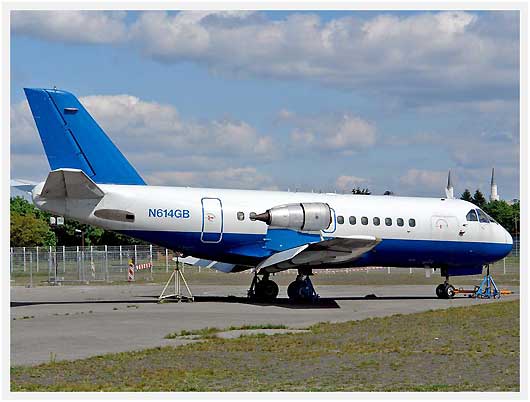Mystery Aft Fuselage Identified - 'VFW Fokker 614' 70's Airliner
 Wednesday, February 23, 2011 at 08:05PM
Wednesday, February 23, 2011 at 08:05PM  The VFW-Fokker 614 (West Germany) small airliner from the mid 1970's (photo: wiki)
The VFW-Fokker 614 (West Germany) small airliner from the mid 1970's (photo: wiki)
The world of aviation is full of unique aircraft designed and built by people driven to find a better way. The VFW Fokker 614, which just happened to be identified correctly by 'Holger' earlier today in a Name The Plane contest, is one of those unique aircraft. The 614 was a kinda cute small airliner with only a 40-44 seating capacity. With a first flight in 1971, the 614 was actually intended to be a sort of modern day DC-3, and it offered up some unique design features. Most obvious was the placement of the turbofan engines on pylons on the top side of the wing. No, the HondaJet isn't as revolutionary as you might have thought.
The engine location meant the landing gear could be short and stout, and since the engines are mounted in that same general location on the wing, which is already likely the strongest part of the airframe, it was perceived as being a really good idea overall. It also meant that the chance of foreign object damage that low slung engines are often exposed to was virtually eliminated.
The airplane was relatively wide and short, with fairly roomy 4 across seating. That seems like a pretty comfortable approach to hauling such a small number of passengers. In many ways, the 614 was ahead of its time... but as is often the case, making money with the airplanes was difficult. After a total of only 19 airplanes were built, production stopped. The VFW Fokker 614 is left to live on as a very interesting little footnote in the history of world aviation.
 Martt |
Martt |  Post a Comment |
Post a Comment |  German,
German,  NTP,
NTP,  airlines,
airlines,  historical
historical  Email Article
Email Article 













































































Reader Comments